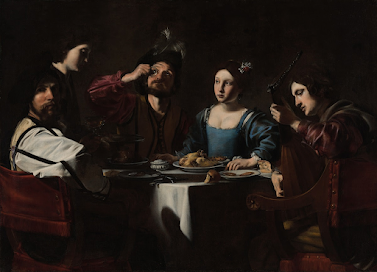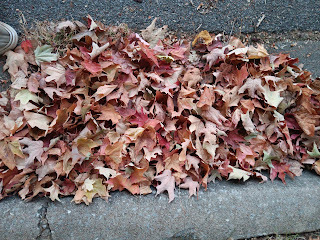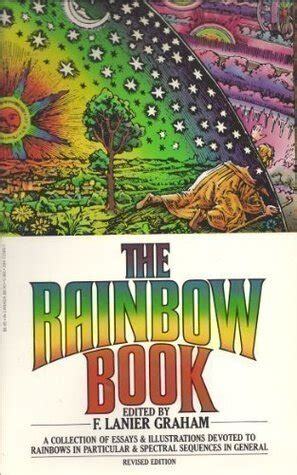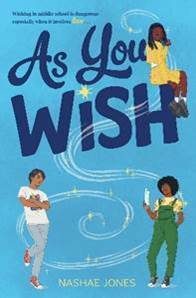Marcia Thornton Jones's Blog, page 11
February 11, 2025
WHAT’S IN THE LIGHT? WHAT’S IN THE SHADOWS?
Two pictures, two museums, one point.
The first, on display at the St. Louis Art Museum.

This second, a photo I took at Musée d'Orsay in Paris.

Why these two?
Nicolas Tournier’s Banquet Scene with a Lute Player (c.1625) came to my attention thanks to the museum's daily email subscription. The timing couldn’t have been more perfect. The description, in part:
Bright light and contrasting shadows have been used to especially good effect in this banquet scene. The artist employed these tools to enhance the spatial qualities of the table corner and to define the surface textures of the food and clothing.
When I read that, this blog entry changed. Instead of focusing, alone, on the clock photo (and not knowng the point I should make), it hit me. I could have come to take this picture from a different angle, highlighting the people rather than the clock. Instead, I intuited that the shadow might tell a more interesting story...
...which segues into writing.
As we record our ideas, what do we bring to light immediately? What do we keep in the shadows for our characters to discover? For our readers to discover? It’s those choices that can add voice and texture, tension and release to our stories. And, on a consciousness level, I didn’t realize this until just now.
Jody Feldman is suddenly using these thoughts to help her get past an issue with her work-in-progress. She’ll see how it goes!
February 8, 2025
Shadows of Our Warmer Selves -- by Jane Kelley

Just shadows of our former selves -- the ones who enjoyed a few days on a Puerto Rican beach a few years ago.
That trip was a highlight for my family -- as you can imagine by the bright sun and our bare feet in the golden sand.
The photo, the shadow, the memory are all tricks of my mind. A virtual world, in a way.
I'm reminded of Plato's story about the cave. Wouldn't I rather think of that happy day on the beach than look out the window at the reality of slushy snow and an overcast day?
That's our job as writers and readers, after all -- to wrangle images into something powerful enough to transcend reality.
Shadows are considered to be insubstantial -- and yet this picture of a picture has conjured up that time.
JANE KELLEY is the author of many middle grade novels including The Girl Behind The Glass, about the most insubstantial thing of all -- a ghost! .
February 3, 2025
Writers, Sometimes You Gotta LET GO
 We've just returned from the glorious Florida Keys, where my son took this beautiful shot of palm tree shadows.
We've just returned from the glorious Florida Keys, where my son took this beautiful shot of palm tree shadows.I mean, the shadows are perhaps more stunning than the actual trees!
It reminded me of a middle grade novel that I worked and reworked and revised and reimagined for YEARS. In the book, shadows were characters.
But I never quite got there with that book, and by the last time I set it aside, it had lost its joy, its music. I had worked it to DEATH!
But. Seeing this photo my son took reminded me of my once-upon-a-time passion for that story. And because we live in a culture that embraces/promotes/urges "KEEP GOING!," of course I dipped back into the folder, just to see what was there and if there was any life left.
I was momentarily seduced by possibility, by the "maybe" in my mind. But then I remembered: even though our culture doesn't like it, sometimes the best thing to do is to LET GO.
But not all projects are meant to live that long. Here in this Year of the Snake, it's a good time to remember that sometimes the best thing we can do is shed our skin. Let go of the old. Move on. Because it's that letting go that opens the space for the next bit of magic and music. . .
And you know, letting go doesn't mean you've wasted your time. It doesn't even necessarily mean a complete relinquishment. Maybe shadows will slither into another of my stories. Surely some of the things I learned while writing (and writing and WRITING) that book will pop up in future projects.
So I closed the folder again. Reminded myself the way forward does not mean carrying everything with me. Just because that book never became an actual book doesn't mean failure. It's just part of the process, part of a writer's journey.
Time for me to again make a choice. To take the next step and the next toward joy and my current passion.
Time to let go.
February 2, 2025
Shadows over D.C.
Shadows over D.C.
There’s something comforting about a cat and its shadow. Thepointy ears, the loaflike shape, the self-containment. At a time wheneverything in my hometown of Washington, D.C., seems twisted and shattered, mycats have been helping me through. This is Odessa, and I’m sure she’d be reallyannoyed with me for posting her picture. She’s graceful, regal, majestic—but veryshy. Our other cat, Sallie, would probably love the attention. When people cometo the house, Odessa runs under the nearest bed, but Sallie approaches thedoor, head tilted, assessing the situation and clearly relishing thecompliments about her cuteness. (Maybe I’ll post her picture next month…) Inany case, I am grateful that they’re part of my family—and I know I’ll continueto rely on them as the shadows darken.
--Deborah Kalb
@font-face {font-family:"Cambria Math"; panose-1:2 4 5 3 5 4 6 3 2 4; mso-font-charset:0; mso-generic-font-family:roman; mso-font-pitch:variable; mso-font-signature:-536870145 1107305727 0 0 415 0;}p.MsoNormal, li.MsoNormal, div.MsoNormal {mso-style-unhide:no; mso-style-qformat:yes; mso-style-parent:""; margin:0in; mso-pagination:widow-orphan; font-size:16.0pt; font-family:"Times New Roman",serif; mso-fareast-font-family:Arial; mso-fareast-theme-font:minor-latin; mso-font-kerning:1.0pt; mso-ligatures:standardcontextual;}.MsoChpDefault {mso-style-type:export-only; mso-default-props:yes; font-size:16.0pt; mso-ansi-font-size:16.0pt; mso-bidi-font-size:16.0pt; mso-fareast-font-family:Arial; mso-fareast-theme-font:minor-latin;}div.WordSection1 {page:WordSection1;}
February 1, 2025
Interview with Barbara Dee, Author of Tear This Down

Welcome to Smack Dab, Barbara!Please tell us a bit about Tear This Down.
TEARTHIS DOWN is about an iconoclastic seventh grader named Freya who learns thatBenjamin Wellstone, her town’s most famous historical figure, didn’t believewomen should be allowed to vote. With the help of a new friend and the guidanceof a cool librarian, Freya starts a campaign to tear down his statue in thetown square, and to replace it with a statue of Octavia Padgett, an overlookedwoman suffragist.
How did you decide on tackling thesubject of a problematic historical figure? Did you have any moments ofquestioning whether to address the issue? This story is such a powerful one–Iwas moved by the arc of Freya moving from wanting to tear down the statue ofBenjamin Wellstone's statue to creating something new alongside it. Why did youchoose to have her activism take this constructive turn?
Ilive in a small town that’s all about Horace Greeley, a famous 19thcentury editor and abolitionist—who, I recently discovered, didn’t believewomen should be allowed to vote. We have a big statue of him that’s the firstthing you see when you get off the highway, and every time I pass it, I think: This guy didn’t believe I should have avoice.
Istarted thinking about how a middle schooler would process thisinformation—especially if that middle schooler were a kid who challenged genderexpectations, I thought about the various ways her protest might face obstaclesin her community, and how she could find some sort of success. For me, the mostimportant element of a middle grade novel is authenticity, so I didn’t want tooverstate what a middle school activist could achieve. Adjusting her campaignfrom tearing down to creating made her eventual success morepositive and inclusive, as well as more realistic.
I appreciated how the bookexplores different kinds of "women's work" - from quilting tohousekeeping to protest. What made you want to examine these intersections?
Likemany, I’ve been thinking about women’s rights a lot lately. Today, many of theprofessions historically associated with women—teachers, librarians, healthcareworkers—are even under attack. I wanted to suggest that women’s work, in allits many forms, deserves to be valued and respected. Oh yes—and compensatedfairly too!
I’m a crocheter and knitter when Iget a chance–and remember the discussions around knitting and protest duringthe Women’s March in ‘16. Quilting plays a central role in the story. What madeyou choose this particular art form as a means of protest and remembrance?
It’sa form of art that some people mistakenly assume to be “women’s work,” good forlittle more than decorative bedspreads. Of course, the AIDS quilt showed theworld that quilting can be a form of social protest as well as a visualexpression of community. One of the things I love about protest quilts is howthey show that seemingly random, disparate “scraps”—bits of cloth that youmight assume were disposable-- can be sewn together to make a powerfulstatement.
Thecharacter of Octavia Padgett bridges multiple worlds–from suffragist to nannyto clinic founder. What inspired her complex journey?
Ididn’t want to give readers the impression that suffragists like OctaviaPadgett succeeded in getting the 19th Amendment passed (grantingwomen the right to vote)--and poof, women had full equality in this country. Sowhile Octavia Padgett was a brilliant, ambitious, scientifically inclined youngwoman, she still couldn’t get accepted to any medical school. Even after beingable to vote, her career options remained limited—so she became a nanny.Eventually, she used both her scientific knowledge and her nurturing skills toopen a small women’s health clinic.
Bythe way, it was important to me not to suggest that being a nanny was somehowless noble than being a midwife—so Freya does have a moment when she realizesthat all of Octavia’s work mattered,and had a strong impact on others.
Freya struggles with being takenseriously as a young activist. What message did you want to convey about youthvoices in social movements?
Kidscan be powerful activists—but it’s hard for them to effect change if they workentirely on their own. At the beginning of TearThis Down, Freya is a lone wolf,judgmental of her peers. She becomes a more effective advocate as she learns toinclude others in her campaign and to respect their voices.
Ihope kid activists take away two messages from Tear This Down. First, if you’re going to have an impact, you needto find your community. And second, adjusting your goals and expectationsdoesn’t have to mean compromising your values.
The book shows differentapproaches to creating change–from protest signs to coalition building. Why wasit important to show these various methods?
Especiallythese days, many kids feel powerless. I wanted to show them that there are allsorts of different ways to make their voices heard. Some ways will work betterthan others, depending on the circumstances. As Freya discovers, it’s good tobe creative, and to be open to new ideas.
One of the book’s greateststrengths is the way in which it deals with erasure in several ways throughoutthe novel. The character of Isabella represents living history fading away, andwe have Freya’s own struggle with whether or not to erase Benjamin Wellstonefrom modern memory. What drove you to include all these storylines?
Sometimeselevating one person’s story means erasing someone else’s. I wanted to showthat that if we’re going to truly understand our history, we need to preserveother stories and memories, other versions of events, even if they contradictthe pretty picture we have of the people we call “heroes.” Also, we need to digdeeper to properly recognize heroes who, like Octavia Padgett, may be unfairlyoverlooked.

What’s next?
Mynext book, Nothing to See Here, isabout four eighth graders (two boys and two girls) who post fake gossip onlineto show their classmates how unsubstantiated rumors spread on social media. Idon’t have a pub date yet, but I expect this book to be out in early 2026.
Where can we find you?
January 28, 2025
Color Me... Not?
by Charlotte Bennardo
 by SlipcoverKAS .COM: https://www.pexels.com/photo/close-up...
by SlipcoverKAS .COM: https://www.pexels.com/photo/close-up...The theme this month is color. Here is my pic.
But... it's gray.
I hate gray. To me, it's not a color, it's an indecision. When people tell me the color of their kitchen cabinets or their living room walls or their new car is gray, I wonder why they couldn't pick a color? Couldn't find the right shade of blue? It doesn't come in red? People will laugh at purple rugs?
I know designers will favor a white or cream aesthetic for their homes and black for their wardrobes because they are over saturated choosing and dealing with color all day.
But... why not then one color? Caribbean blue? Peacock teal? Blush pink? Even with white, gray, or beige walls or furniture, why not a splash of color somewhere like pillows, pictures, rugs? A spot of joy amongst the blah?
That's what we need to relearn from children. They don't 'matchy-match' their clothes. If they want to wear the pink tutu with polka dot tights and their rainbow flip flops, they'll do it. And love it. They know what makes them happy. We lost that joy of color. Okay, we'll have a shirt in a stunning magenta that we wear on occasion, but everything else has to be muted, or complementary. Let's use the whole damn box of crayon colors and enjoy it. Every room in my house is a different color, although they are earthy and subdued shades, but I do have a raspberry-colored couch, my bedroom is in sunset colors, and my bathroom is terracotta. Every year or so my patio furniture is painted a new color: I've had royal blue, flamingo pink, sunny yellow, lime green, and Caribbean blue. Yeah, the table and chairs are black with beige webbing (yawn...yuck!) only because most people can't take a barrage of color. It's a shame.
The rule in our house is, no gray (stainless steel appliances notwithstanding). I bought my gray cat the brightest color collars. I don't own any gray clothes except for a pair of sweats which were my son's, but I shrunk them. I wear them for painting, so now they have color.
When the blahs of winter with all the drab grays and dull browns are ready to overwhelm me, bam! The daffodils and green onion grass start to sprout and I feel joy again. With spring and summer coming, so are more colors!
Keep your palette ready and add that orange or purple or blue, or whatever that you love.
Charlotte writes MG, YA, NA, and adult novels in sci fi, fantasy, contemporary, paranormal genres and now romance. She is the author of the award-winning middle grade Evolution Revolution trilogy, Simple Machines, Simple Plans, and Simple Lessons. She co-authored the YA novels Blonde OPS, Sirenz, and Sirenz Back in Fashion. She also has short stories in several anthologies. Having finished her MFA, she's applying what she learned and is revising several children's and adult novels. She lives in NJ with her family and her floofy cat. When they trimmed the backyard tree, the crazy squirrel couple had to move out, but she is happy to report she has a new squirrel tenant.
January 25, 2025
Color Palettes in Writing (Holly Schindler)
Last fall, I took a ton of pictures just like this one:

Color's one of those things that seems like a no-brainer until you're in the midst of an illustrative project. And then finding the right mix can seem nearly impossible.
For illustration, I find my color palettes are often better if I take them from real life. So I take pictures like this one--they're all over my phone. I haven't used this particular picture yet, but think it would be great for a pattern--maybe a paisley that actually looks like falling leaves?
I've begun to wonder if this is true of writing, too--and have started keeping a journal where I jot down weird observations. I keep thinking ripped-from-life content will liven up my writing. Make it seem natural and true.
I've been thinking maybe it would be helpful to use these observations like color palettes.
~
Holly Schindler is the author of The Junction of Sunshine and Lucky
January 23, 2025
Spectral Sequences? Smack Dab in the Imagination by Dia Calhoun
If you want your imagination to run away into color, check this out:

The Rainbow Book: Being a Collection of Essays & Illustrations Devoted to Rainbows in Particular & Spectral Sequences in General, Focusing on the Meaning of Color(Physically & metaphysically) from Ancient to Modern Times
Who wouldn't be intrigued by this description: "Sections are printed on colored paper, red, orange, yellow, green, blue and purple. It is a veritable encyclopedia of rainbow lore: the art of the rainbow, including myth, magic, paintings, prints, and poems. The physics of the spectrum--light, color and the stars, and the "Music of the Spheres". The metaphors of color, exploring the colors of consciousness and auras - and so much more. 224 pages full of information, illustrations, and stories."
It includes by Joseph Cambell, CJ Jung, and quotes from Lewis Carroll. I can't wait to get my hands and imagination on this book and see how it impacts my writing.
January 15, 2025
Stop It. You're Doing Great.
It seems chaos surrounds us. I want to acknowledge theterrible tragedy unfolding in California due to the fires, and send healing prayers to all those impacted. In these darktimes, I am reminded of these wise words from K. M. Weiland:
“… storytelling is never a frivolous pursuit in times likethese. The stories we tell matter. They tell us who we are, how we will faceour darkest tragedies, and who we will become as we rise from the ashes.”
As we muse upon the beginnings of a new year, with all theresolutions, overthinkings, ponderings, regrettings, contemplations,examinations, ruminations, sighings, I quote my friend, the wonderful artist Denise Fleming:
Stop it. You are doing a great job.
We’ve heard it often enough: our stories matter. They helpus understand the world around us, even as they help us understand ourselves.Stories build empathy and help develop imaginative thinking. Stories make adifference. We are homo narratus, story animals, suggests Kendall Haven (StoryProof: The Science Behind the Startling Power of Story, 2007). We have told ourstories for over 100,000 years. Not every culture has developed codified lawsor written language, but every culture in the history of the world has createdmyths, legends, fables, and folk tales.
Stories are so old, so intimately connected with language,some researchers suggest that language was created to express stories. In fact,evolutionary biologists now believe we are hardwired to think in story forms.Cognitive scientists know that stories help us understand and rememberinformation for longer periods. Researchers have found that telling stories atan early age helps develop math abilities and language literacy. And teachersknow that understanding the story process helps young readers understand theorganization of language.
But sometimes, the burdens of life can overwhelm ourstorytelling. It becomes easy to not do the creative work. We’re too tired, toobusy, or it’s not good enough, or we’re waiting for a better time, or a perfecttime. I offer, while there may be a better moment, there is no such thing asperfect. But I will also add: taking a moment for yourself is also a very goodthing.
In her blog,
Anne R. Allen explores Misconceptions and Old Ideas Burdening Your Writing Life:“The world is full of misconceptions of what a writer’s lifeis like, or what it “should” be like. An awful lot of beginning writers havethese burdens in their brains. In order to find your own version of success asa writer, you need to let go of the old, false ideas that weigh you down.”
Holly Schindler, in her newsletter That’s My Story and I’mSticking With It, reminds us of theinsecure nature of the writing business, “It’s so tough to make these plans aswriters—it takes so long to finish a project, and it takes solong to hear back on submissions. And it is never guaranteed what a bookwill wind up doing in the market.” She offers an excellent strategy inkeeping track of your accomplishments. A Writer's Journey: The Success Journal
“..Courses taken. Outlines completed. Revisions figured out.Great word count days. And, yes—manuscripts completed. Queries sent out?Definitely.
But I am going to record my successes. Things Ihave accomplished. Not things that were awarded to me.”
As Holly suggests, we have to celebrate ourselves. I repeat Denise’s wise words. You should shout it, or singit, to each each other and everyone.
Stop it. You are doing a great job.
More excellent reads to get you through these days:
K.M. Weiland, Helping Writers Become Authors: The Power of Hopeful Stories in a Stressful Time
Angel Chernoff, at Marc and Angel Hack Life: 40 Quotes for Letting Go and Coping With Things You Can’t Control this Year
I am celebrating You!
-- Bobbi Miller
January 14, 2025
Interview with Nashae Jones, Author of As You Wish

Welcome to Smack Dab, Nashae. Please tellus a bit about As You Wish.
I’m so excited to do this interview with Smack Dab.Thank you for having me. As You Wish is a middle grade romance about a girl whoafter a fight with her best friend, makes misguided wishes to the West Africantrickster god, Anansi. It’s a story that centers around friendship, family, andacceptance and of course a touch of magic.
I love the way you incorporate the idea of“be careful what you wish for” throughout. Where did the initial spark ofinspiration come from? How did you come to explore it through Birdie’sperspective?
I think the “be careful what you wish for” trope has beenone of my favorite tropes from the time I was kid. One of my earliestencounters with the trope was when I read the Goosebumps book Be Careful WhatYou Wish For, and I remember being absolutely fascinated with the concept ofthe duality of wishes, and how magic was never an adequate solution for yourproblems. So, I think it's always been a concept that’s been rattling around myhead. It’s always been a trope I wanted to explore.
It was a lot of fun getting to write about using a magicalsolution from the point-of-view of a middle school girl because we get to seesome very middle school type of wishes along with some more poignant, heartfeltrequests.
What inspired you to incorporate theAnansi stories from Ghanaian folklore into a contemporary middle grade novel?
I adored reading trickster tales when I was younger. Iwas always interested in the intersection between slapstick humor and morallessons. Anansi is one of my favorite folkloric characters, so I wanted torevamp him and make him come alive for today’s generation of readers.
I love that you’ve written an MG rom-com.You see the rom-com genre in YA, but so rarely in MG—those very first romantic feelingsare not as frequently explored in MG. What made you want to explore it? Why MGinstead of YA?
I think that there’s a real need for upper middlegrade books. In the past, there weren’t many options for kids who were in thattransition phase where they’re ready to move on from younger middle grade booksbut who aren’t quite ready for young adult books. When my own daughter waseleven, she was hungry for age-appropriate romance, but there wasn’t a wholelot available to her. So, I really want to write something to fill that need.
Nancy/Anansi is both helper and trickster.How did you balance these aspects of her character?
One of my absolute favorite parts of writing As YouWish was writing a middle school version of a morally grey character. Traditionally,trickster characters are neither good nor evil, and I really wanted to shapeNancy into that mold. I tried to balance Nancy’s mischievous and her innatedesire for chaos with her underlying affection for Birdie.
How did you decide which aspects ofBirdie's life would change or stay constant across the different realities? Howdid you develop the different versions of Birdie across the various realitieswhile maintaining her core character?
Constructing the alternate realities in an authenticway was probably one of the most difficult tasks for me when I was writing thisbook. I wanted to create realities that really drove home the point that usingmagic as a solution to your problems is not only inadvisable, but dangerous.When creating the different worlds, I focused on each one of her corerelationships. I brainstormed ways that those relationships would change as aconsequence of her wishes.
Social media plays a significant role inone of the alternate realities. What prompted you to examine its impact on teenidentity and relationships?
It’s hard to talk about the modern-day teenageexperience without incorporating social media. Many teens not only have tonavigate the complexities of their identity in the real world, but also in thevirtual realm. With Birdie erroneously tying peer acceptance to popularity, Ithought it would be helpful to show the influence social media has on teenagerelationships.
Sign language and Mishti's character playimportant roles in the story. What inspired you to include deaf representation?
I think all types of kids deserve to see themselves inbooks. With Mishti, I wanted to write a character who was deaf, but who wasn’t necessarilydefined by being differently abled. It was important to me that Mishti was a fullyfleshed out character that didn’t perpetuate stereotypes about deaf culture.
The revelation about Birdie's Uncle Ty'sdeath comes fairly late in the story, but it serves as a crucial piece inunderstanding her mother's anxiety. How did you balance keeping this emotionalbackstory hidden until the right moment while still making the mother'soverprotective behavior feel authentic throughout the book?
Birdie spends most of the story trying to find a wayto be “normal”. A big part of what Birdie feels like makes her abnormal is hermother’s anxiety and how it spills over into an almost smotheringoverprotectiveness. I think it was necessary to keep Ty’s backstory hidden fora while, because the reader needed to grow along with Birdie to be able totruly be able to empathize with Birdie’s mom.
How did your experience as an educatorinfluence how you wrote about middle school dynamics and relationships?
I think being a teacher has given me a unique insightinto the middle school experience, and not just because I can translate phraseslike skibbidi toilet. Ha! Because I’m a teacher, I’m able to get first-handknowledge on how teens interact with each other and the adults in their lives.Surprisingly, I find that the way teens build and maintain relationships istimeless. Teens today go through some of the same triumphs and struggles that Iwent through decades ago.
The book deals with themes of identity andauthenticity. What message did you want to convey to young readers about beingtrue to themselves?
I wanted readers to know that being “normal” issubjective, and everyone, no matter how perfect is dealing with their owninsecurities. So, it’s important to be the person who makes you happiest.
What’s next?
I am currently working on my young adult debut. Ican’t wait to share it with the world.
Where can we find you?
I have a contact form on my website: www.nashaejones.com.I’m most active on Instagram at @nashae.jones.




